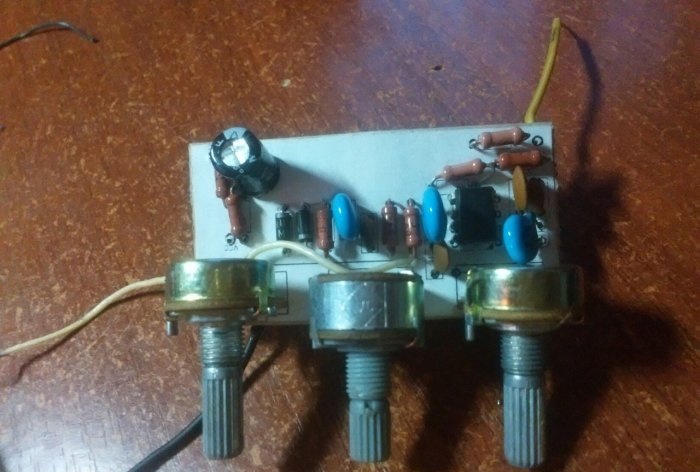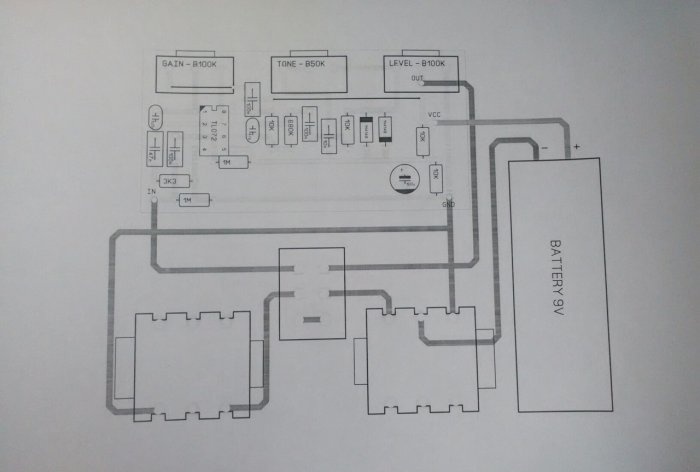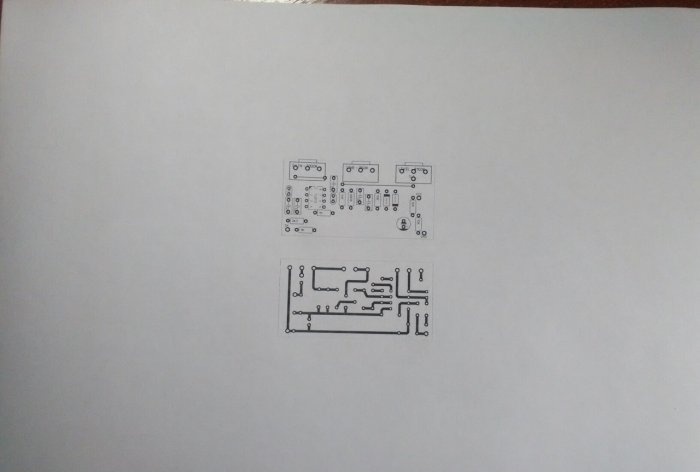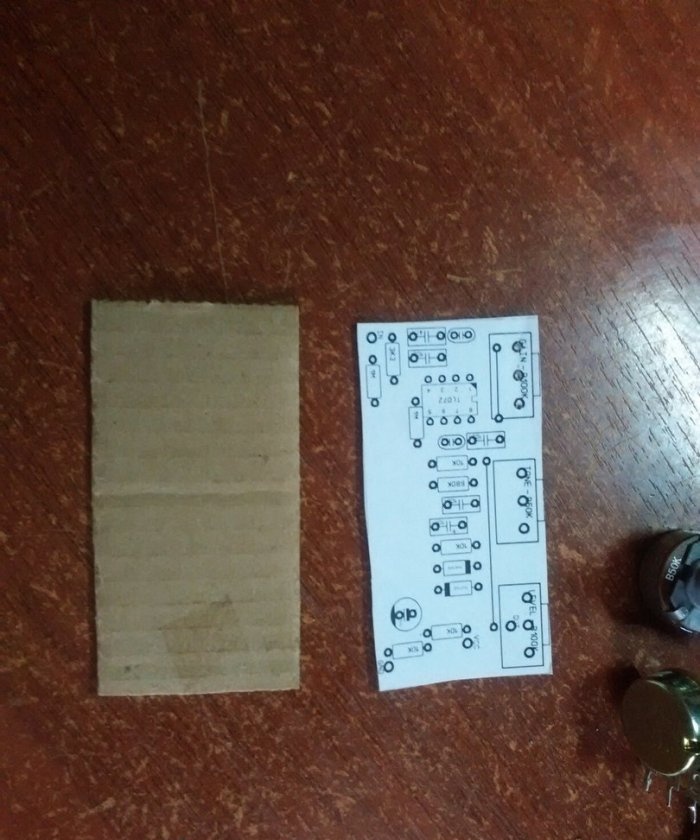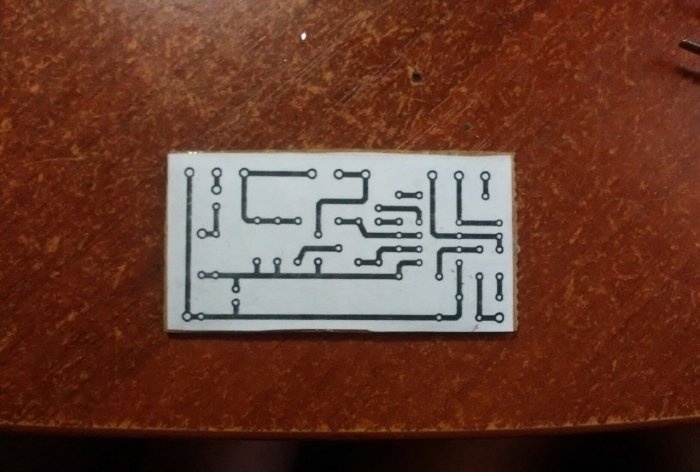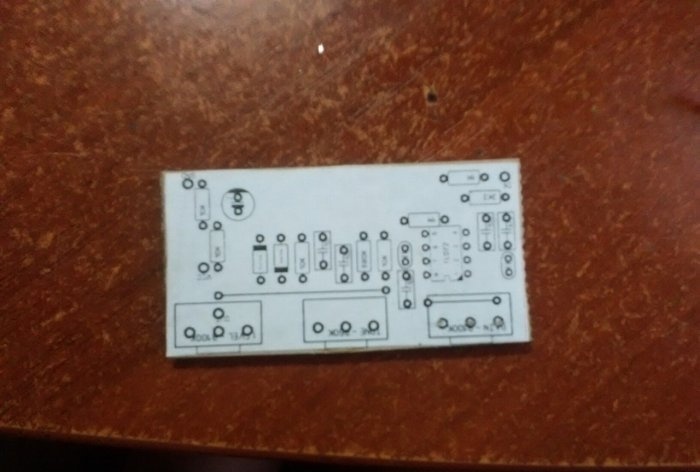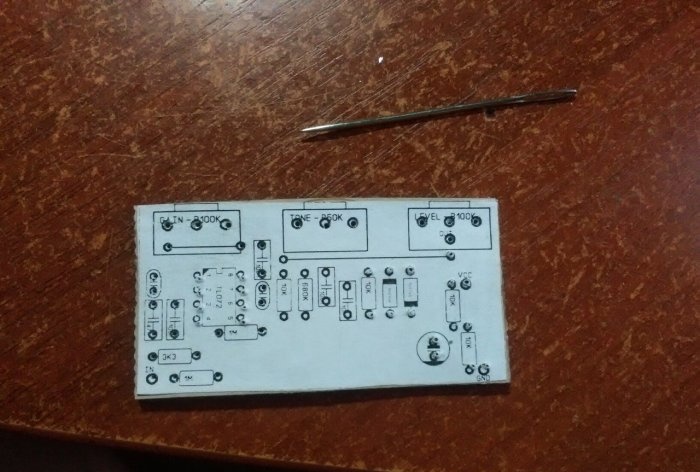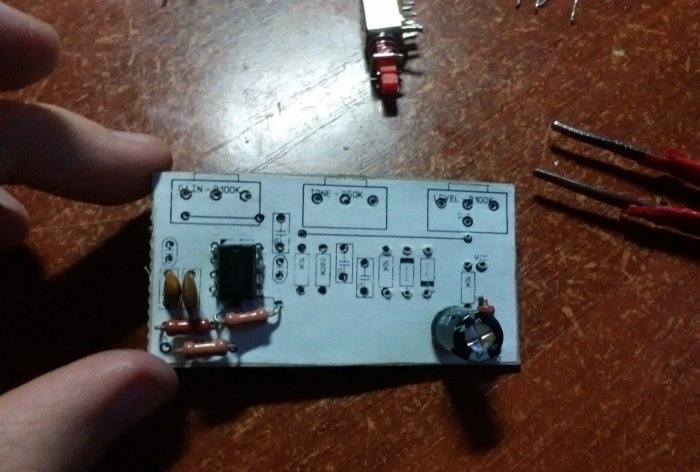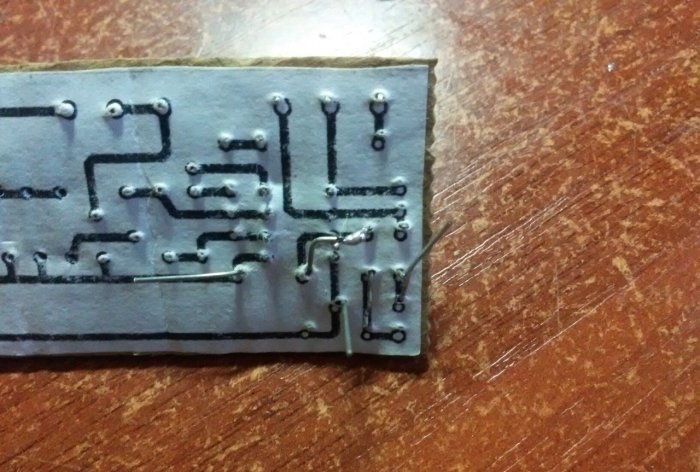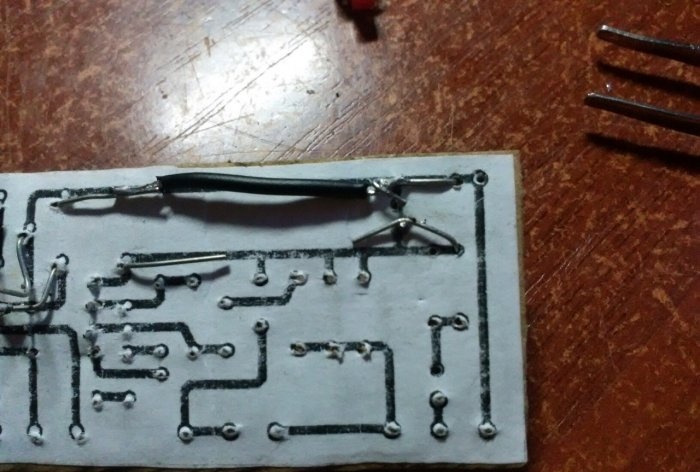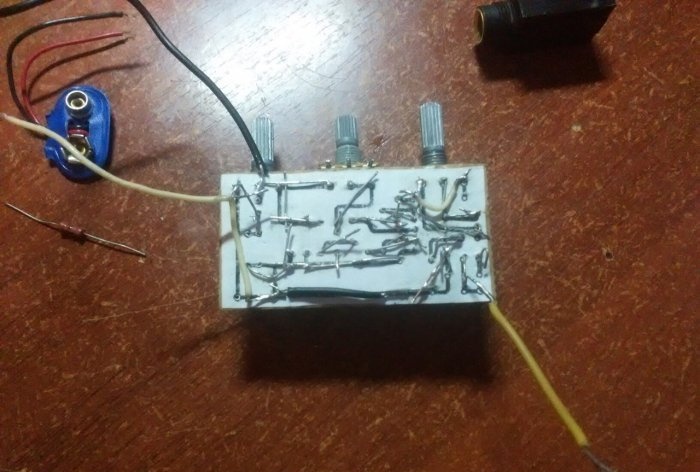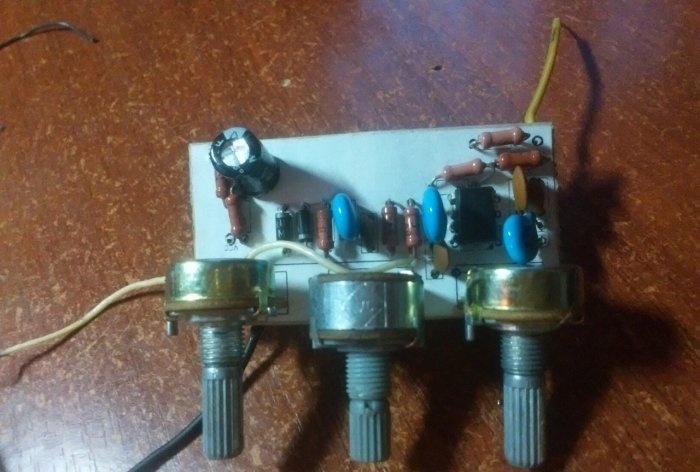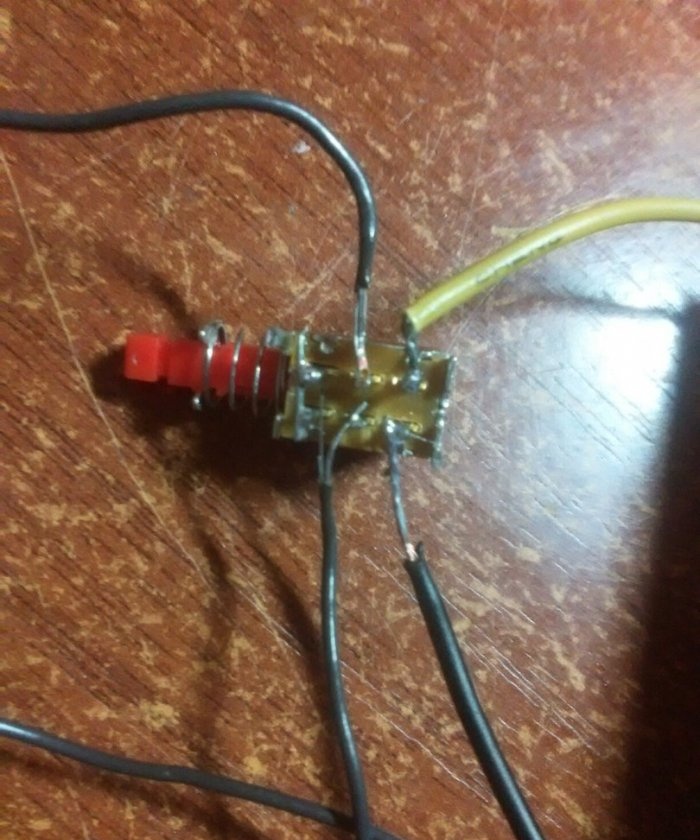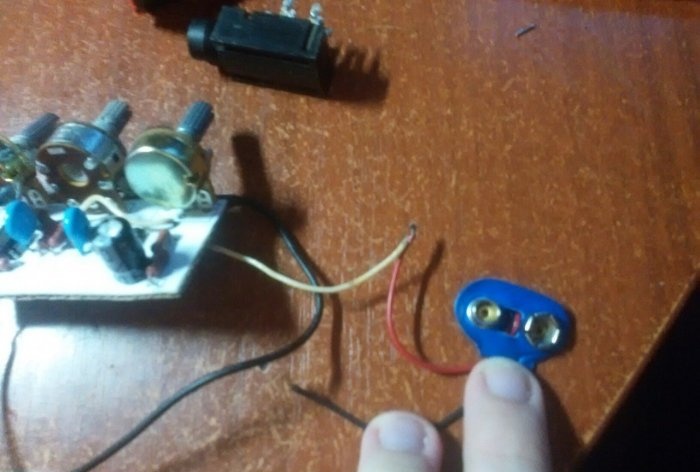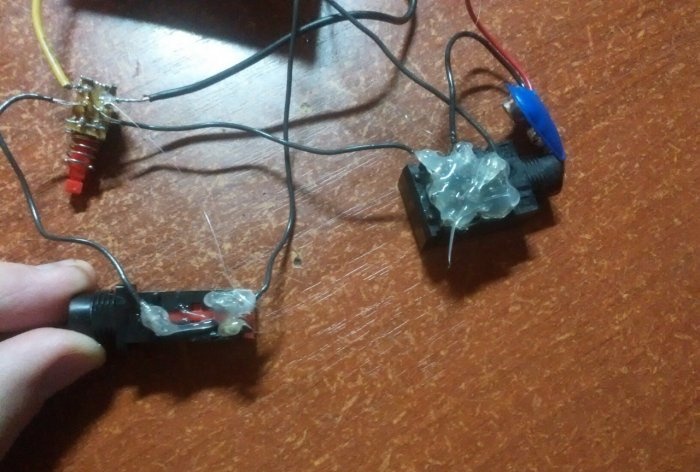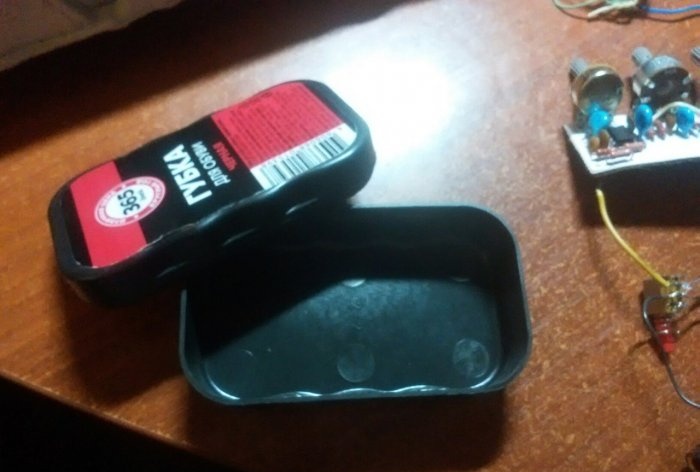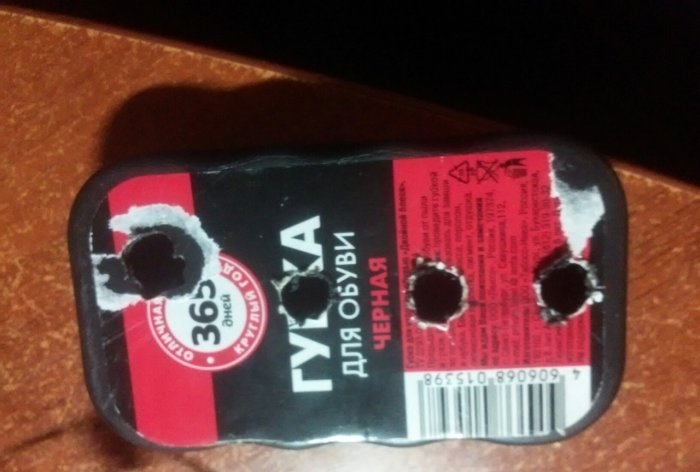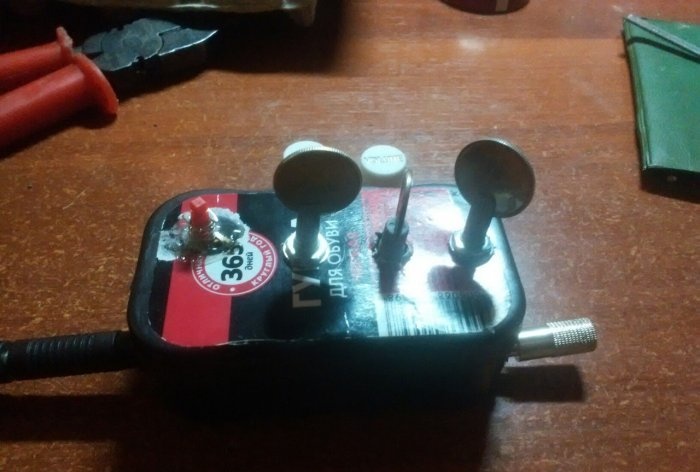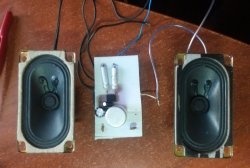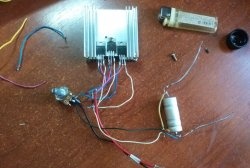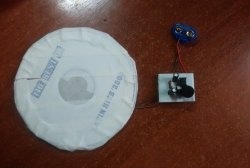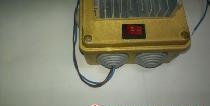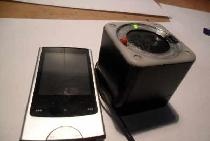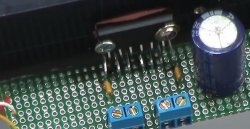DIY Guitar Distortion Pedal
Hello friends, today I will tell you about the circuit of a guitar gadget with the distortion effect. The project is quite simple, I recommend it for beginners in soldering.
All this can be bought at your nearest radio electronics store. You can also use tweezers and a third hand for soldering for convenience.
I found a diagram for this project on the Internet.
But we won’t do it on the board, since it will have to be manufactured first, and not everyone knows how to etch printed circuit boards. This pedal will be as simple as possible. We will assemble it on 66*33 mm cardboard, which will serve as the main board. The result will be something between a printed circuit board and a surface-mounted installation. Glue the project layout onto the cardboard using PVA.Before this, the layout must be printed in real size (as in the photo).
Next, using a sewing needle, I made holes in the cardboard for the feet of the radio components.
Under no circumstances should you cut off the legs of the parts; they will act as tracks. Now we insert the parts into their places, and solder the tracks on the back side. We won’t talk too much about this, everything is intuitive.
In some places they will not be long enough, so use wires. Like here:
When everything is ready, the board will look like this:
Now, according to the diagram that I gave earlier, we solder the button, the connector for the crown battery and the jack sockets.
I sealed the places where short circuits are possible with hot glue.
At this point, the production of the circuit itself is completed.
After a short test, it became clear that the pedal was working. Now we will make a body for it. Made from a shoe sponge box. A collective farm, of course, but the pedal was originally made “cheap and cheerful.”
Holes for potentiometers and buttons are made in the cover. On the sides for jacks. The box turned out to be too small. And with the crown it was already barely closing, so I had to tape the lid with electrical tape.
I found a couple of handles for the twisters, but they didn’t fit here. So I used change to turn the gain, tone, and level knobs. This completes the manufacturing of the Distortion guitar pedal. The project is quite simple, but the sound suits me.
You will need:
- Operational amplifier TL072.
- Resistor 10 kOhm (4 pcs).
- Resistor 1 mOhm (2 pcs).
- Resistor 3.3 kOhm.
- Resistor 680 kOhm.
- Potentiometer 100 kOhm (2 pcs.).
- Potentiometer 50 kOhm.
- Capacitor 100 nF (3 pcs.).
- Capacitor 10 nF.
- Capacitor 100 uF.
- Capacitor 47 nF.
- Capacitor 47 pF.
- Capacitor 100 pF.
- Diode 1N4148 (2 pcs).
- Button.
- 2 sockets for 6.1 mm jack.
- Crown and crown connector.
All this can be bought at your nearest radio electronics store. You can also use tweezers and a third hand for soldering for convenience.
Circuit assembly
I found a diagram for this project on the Internet.
But we won’t do it on the board, since it will have to be manufactured first, and not everyone knows how to etch printed circuit boards. This pedal will be as simple as possible. We will assemble it on 66*33 mm cardboard, which will serve as the main board. The result will be something between a printed circuit board and a surface-mounted installation. Glue the project layout onto the cardboard using PVA.Before this, the layout must be printed in real size (as in the photo).
Next, using a sewing needle, I made holes in the cardboard for the feet of the radio components.
Under no circumstances should you cut off the legs of the parts; they will act as tracks. Now we insert the parts into their places, and solder the tracks on the back side. We won’t talk too much about this, everything is intuitive.
In some places they will not be long enough, so use wires. Like here:
When everything is ready, the board will look like this:
Now, according to the diagram that I gave earlier, we solder the button, the connector for the crown battery and the jack sockets.
I sealed the places where short circuits are possible with hot glue.
At this point, the production of the circuit itself is completed.
Frame
After a short test, it became clear that the pedal was working. Now we will make a body for it. Made from a shoe sponge box. A collective farm, of course, but the pedal was originally made “cheap and cheerful.”
Holes for potentiometers and buttons are made in the cover. On the sides for jacks. The box turned out to be too small. And with the crown it was already barely closing, so I had to tape the lid with electrical tape.
I found a couple of handles for the twisters, but they didn’t fit here. So I used change to turn the gain, tone, and level knobs. This completes the manufacturing of the Distortion guitar pedal. The project is quite simple, but the sound suits me.
Similar master classes
Particularly interesting

Cable antenna for digital TV in 5 minutes
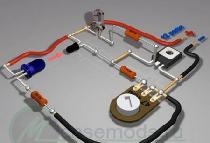
A selection of simple and effective schemes.
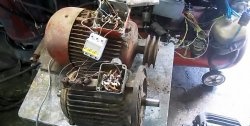
Three-phase voltage from single-phase in 5 minutes
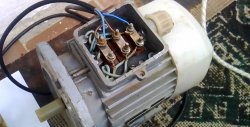
Starting a three-phase motor from a single-phase network without a capacitor

Eternal flashlight without batteries
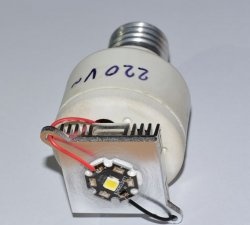
How to make an inexpensive but very powerful LED lamp
Comments (10)

